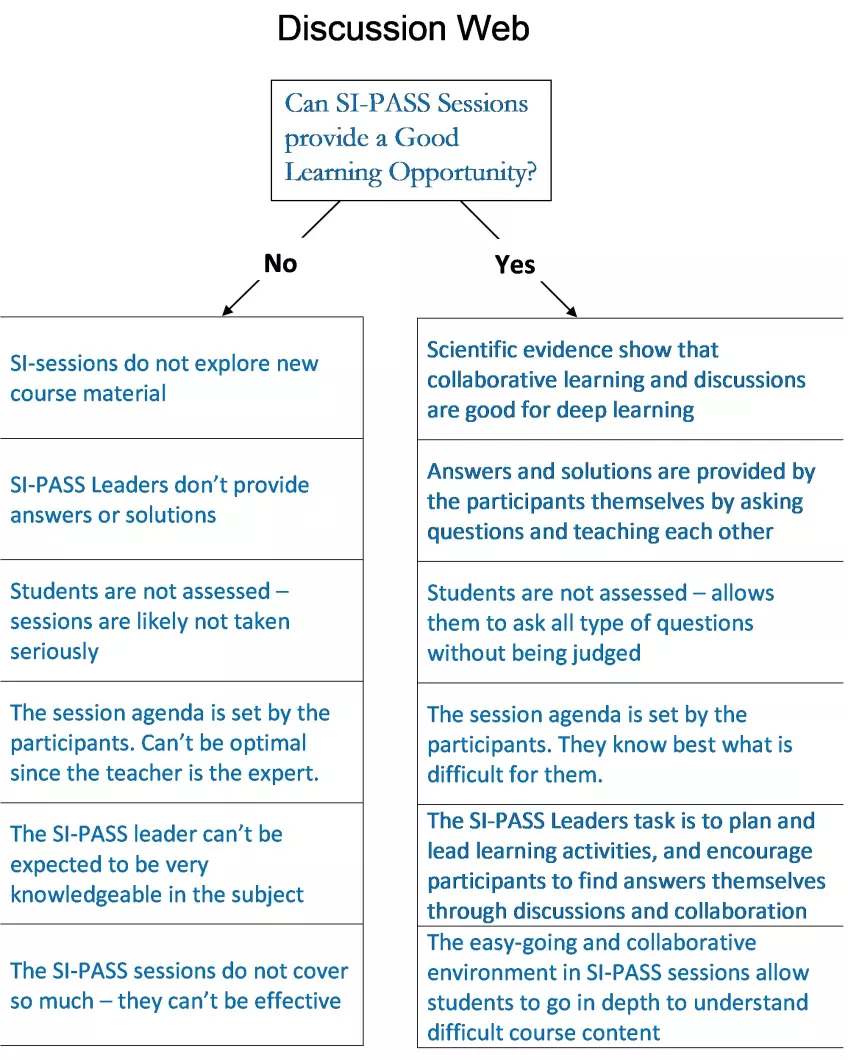Discussion Web
The Discussion Web helps students understand different points of view on a subject by actively involving everyone.
How?
- As a Leader, compose closed questions/statements (yes or no/true or false) on central topics in the covered course material that will generate interest and different views.
- Write down the first question/statement on the white-board/flip-chart, allowing for affirmative or disagreeing arguments on each side of the question/statement.
- Appoint a scribe and let the students brainstorm - coming upp with arguments for and against. See to that the scribe have time to write down all arguments on appropriate sides.
- Then ask the students to work in pairs and decide which conclusion that seems most valid. Let each pair vote and come to a whole-group conclusion. Repeat with the other questions/statements.
- Conclude with a discussion about the strategy: Did this strategy help you to see both sides of an issue? Did the strategy allow you to have an active role in the discussion?
References and Further Reading:
- Alvermann, D (1991). The Discussion Web: a graphic aid for learning across the curriculum. The Reading Teacher, 45, 92-99; Buehl, D (2001). Classroom Strategies for Interactive Learning. Newark, DE: International Reading Association
- Santa C.M., Havens, L.T. & Valdes B.J., (2004). Project Criss - Creating Independence through Student-owned Strategies. Helping teachers teach and learners learn. Third Edition. Kendall/Hunt Publishing Company. Dubuque, Iowa)


